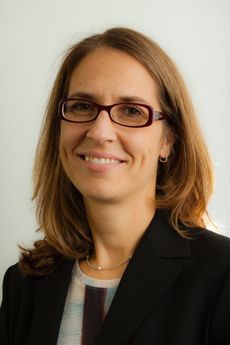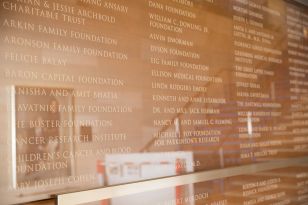Fighting the War on Cancer
It has been 44 years since President Nixon declared war on cancer and we are nowhere closer to defeating it. Despite the fact that the National Cancer Institute has a budget of approximately $4.9 billion per year, the disease is expected to surpass heart disease as the number one killer of Americans by 2030. Why haven’t we made more progress?
For decades biologists have been at the forefront of cancer research, running experiments on cancer cells in petri dishes and mice. While their work has been critical to advancing our understanding of cancer, we do ourselves a disservice to limit the scope of research to biology alone. If we want to get ahead of this insatiable disease, research needs to get creative. The best way to do that is through interdisciplinary collaboration.
President Obama’s recent call during his State of the Union address for supporting research that focuses on tailoring drug and other treatments to a patient’s individual DNA is encouraging and may improve anti-cancer therapy. We’ve already seen how this so-called precision medicine can be successful in advancing research to combat other diseases like cystic fibrosis.
Most cancer labs have ignored the physical context in which cancer cells develop because analyzing and recreating the physical properties of tumors is difficult and requires expertise cancer biologists do not have.
But cancer is tricky and its genetic information may not enable reliable conclusions. Take, for example, some of the women that Angelina Jolie recently called attention to, who harbor mutations in a particular gene called BRCA1.Carriers face a 65 percent risk of contracting breast cancer by age 70. Researchers have yet to determine why the same type of cancer behaves one way in one patient and completely different in another. There is some evidence that suggests incorporating the physical sciences might lead to new insights.*
Collaborative research between biologists and engineers, for example, has found that the increased rigidity of breast tumors relative to the surrounding tissue doesn’t just help a woman detect breast cancer during a self-exam. The rigidity actually makes breast cancer turn more aggressive.
Discoveries like this cannot be made in petri dishes. To broaden our understanding of the disease, interdisciplinary study between cancer biologists and engineers should become far more common than it is today. My research team found that just one percent of articles published in Cancer Cell over the past 15 years, the premier journal of cancer research, refer to interactions between cancer cells and their physical environment.
Most cancer labs have ignored the physical context in which cancer cells develop because analyzing and recreating the physical properties of tumors is difficult and requires expertise cancer biologists do not have. Engineers could help with that. Materials scientists, for example, can help compare the material properties of normal and tumor tissue and then make matrices that exhibit their properties for biologists to run tests on. Furthermore, tissue engineering, a field originally developed to fabricate tissues and organs for regeneration therapies, if invested in, could develop ways to fabricate whole tumors. If done in a patient-specific manner, such models could dramatically enhance precision medicine.
To be sure, collaborating across fields is not an easy task. Engineers typically spend a lot of time figuring out design and measurement parameters, while biologists often perform experiments based on established protocols. The differences in their approaches to research could lead to communication challenges. Moreover, it’s likely that a conventional biology lab will need to invest in additional equipment to meet the needs of the engineers they might work with.
While communication may be challenging at times and the investment costly, interdisciplinary collaborations yield results. We know this because it’s already happened. Engineers worked with orthopedic surgeons to develop the artificial joints that are now routinely used in clinics to replace damaged knees and hips. Similarly, the work research engineers and plastic surgeons did together was key to designing man-made skin that can improve wound healing of burn patients.
There are some signs of acknowledgement of the need for embedding physical scientists within the cancer research community. In 2009, the NCI launched the Physical Sciences Oncology initiative to integrate cancer biology and the physical sciences. While the initiative has already resulted in new physical sciences-inspired clinical trials, much more can be done. When analyzing research projects listed in the NCI Funded Research Portfolio database my team found that the combined research funding dedicated toward this initiative and other physical sciences-based cancer research only accounts for less than one percent of the annual research budget of the National Cancer Institute. Given the potential breakthroughs collaboration between cancer biologists and physical scientists could bring, that funding isn’t enough.
The past four decades have taught us that cancer will not go down without a fight. To beat it, we need to be nimble, resourceful, and creative. Teamwork between the biological and physical sciences is essential. If we fail to recognize that, victory may elude us far longer than we hope.
This article by Associate Professor Claudia Fischbach originally appeared on psmag.com




